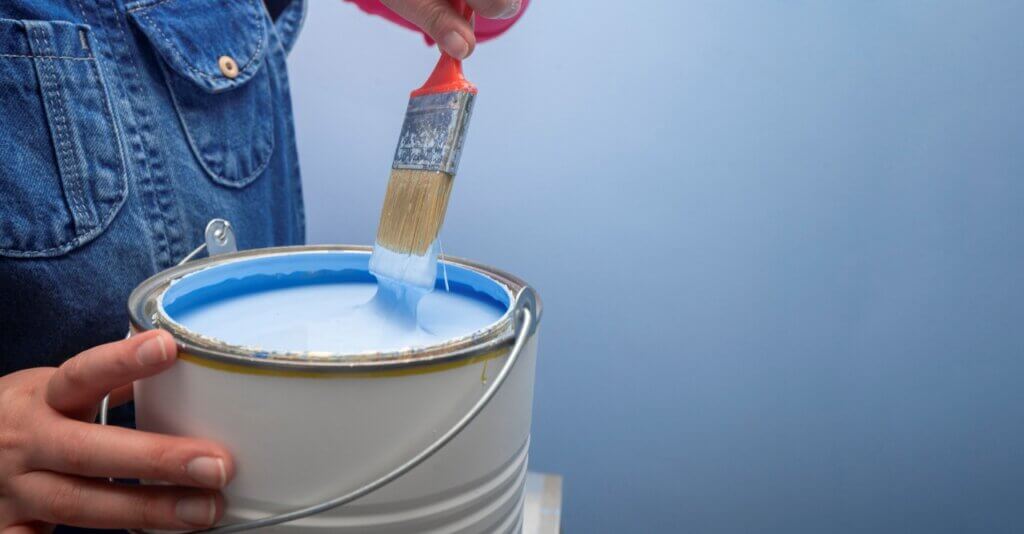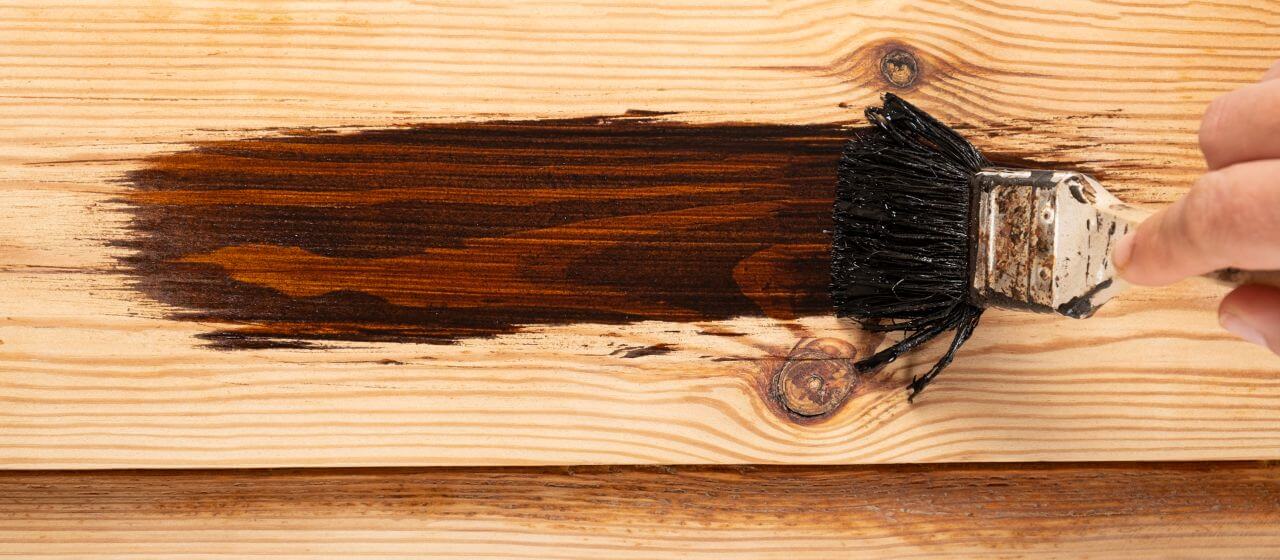
Do You Need Planning Permission for Cladding?
If you’re considering installing cladding on your home or in the garden, you’ve probably asked the question, ‘Do you need
Products in Stock
Lowest Prices
Express Delivery
10-Year Warranty
January Sale. Up To 15% Off.

You may be wondering, can you paint composite decking? It isn’t generally recommended and, in fact, one of the main benefits of composite decking is that it doesn’t require painting, staining or the application of other treatments. Our composite decking is an eco-friendly blend of recycled plastic and wood that is specifically designed to be low maintenance, weather-resistant and durable compared to traditional timber decking.
There may be some times when you do want to paint composite decking, however. You may want to spruce up your deck or give it a new look, style or theme. If you do decide to paint composite decking, there are a few things to bear in mind. In this article, we’ll guide you through the process and tell you about the issues to look out for.
Unlike traditional wooden boards that need to be stained or painted, our composite decking boards come in a wide range of soft and subtle, or bold and beautiful colours that are set in during the production process. These colours will remain strong and unblemished through season after season. The decking is also designed to be low maintenance, with just routine cleaning required to keep it at its best.
The surface of the decking is also designed to be extremely durable and resistant to weather, rot, mould and damage, so it doesn’t need any extra protection. The composite material can also be difficult to paint as some paints will not stick to the surface as well as to other materials. You may still be wondering though, ‘Can I paint composite decking?’ You can paint it, but you should also consider whether that is really the best option.

If you do decide to go ahead and paint your decking, it’s important to use the most suitable composite decking paint. Using the wrong type of paint could cause issues with coverage, flaking or leave your decking looking flat. The best type of paint for composite decking is a high-quality paint with a 100% acrylic latex exterior. This will stick to the composite material better than other types of paint and should be able to handle the natural expansion and compression of composite materials without flaking or rubbing off. It is also resistant to cracking and UV damage.
You can get latex products for use as a composite decking paint in a number of different finishes. Matt is good for a more neutral effect, but eggshell, satin and semi-gloss can also bring an attractive sheen to your outdoor space.
Dino Decking’s composite decking boards and related products such as balustrade railings and composite fencing come with a 10-year warranty. Other suppliers may also offer a limited warranty with a number of conditions. You should always check the wording of your warranty before painting composite decking to check whether doing so would invalidate the warranty.
All composite decking is designed to be durable, but capped composite decking is even more damage-resistant. Capped composite has an extra shield of a special polymer coating to provide additional protection against the elements. If you’re unsure whether your decking boards are capped or uncapped, you can check the surface of them to see whether there is a thin layer on top.
Capped decking may feel smoother to the touch. It’s generally not recommended to paint capped composite, as the paint may struggle to adhere to the surface. The good news is that capped composite is even more resistant to stains and fading from UV exposure, so it really shouldn’t need painting at all.
Before diving in with a paintbrush, it’s probably worth checking your decking thoroughly to see whether it actually needs painting. Composite decking that has been maintained shouldn’t need painting at all during its lifespan. There may be some minor fading or colour changes in some areas, but these are likely to be minimal, and overall, composite decking should stay looking great for years. You can find out more about how to look after your deck in our composite decking maintenance guide.
Preparing thoroughly before you start will make the job easier when you actually come to paint composite decking.
You should get everything that you might need together. This could include:
Preparing the decking is an essential step, whether you are working on composite or traditional timber decking. You should clear the entire surface, sweep it free of leaves and larger debris, and give it a thorough clean. This helps the paint to stick to the surface and will also prevent you from painting dirt and debris into your decking.
Composite decking is relatively easy to clean, but you can refer to our composite decking cleaning guide for further advice. Once the decking is clean and has thoroughly dried out, you can gently sand the boards as evenly as possible. This will help the paint to adhere to the boards. Note, however, that sanding is not recommended for capped composite boards as it can damage the polymer coating.
Primer is a preparatory coating that you apply to a surface before you begin painting. It helps the paint to adhere to the surface, which can be particularly useful if you are painting composite boards. It can also help the true colour of the topcoat to come through. Apply the primer using a soft paint brush or roller, and don’t apply too much.
On textured composite decking, the primer should be applied so that the texture is still fully visible. If using a roller, you may still want to use a brush to spread the paint into any grooves and to fully cover tricky areas such as corners. Leave the primer to thoroughly dry before applying the topcoat.
When you apply the paint, you should again make sure that you don’t put it on too thickly. Ensure that you can see any grain or texture in the composite decking, and try to apply the paint evenly. Refer to the tin or manufacturer’s instructions regarding drying times and how many coats you will need to apply. You can use a roller or brushes, with small, soft brushes being useful for getting into hard-to-reach areas.
Leave the paint to dry and ensure that nobody walks on it – putting a protective barrier around the area can be handy for reminding people not to walk on the decking as it dries. You should also keep any pets you have locked inside for the duration. However, neighbourhood cats can be an issue!
Paint and stains can both be used to bring colour to decks, but they work in different ways. Stains are treatments that are generally used to colour and protect wooden decking boards. They produce a more natural finish by penetrating the grains of the decking rather than leaving a layer on top like paint. It is possible to stain uncapped composite decking, but as these boards are already coloured, the results can be variable. Stain will not generally work with capped composite materials.

So, can you paint composite decking? Yes, you can, but you should always take care and consider whether you really need to do so at all. Our composite decking and decking accessories are available in a wide range of colours and configurations to suit all tastes and styles, and they are designed to be long-lasting and durable.
If you want to check out our available colours and finishes first-hand, you can order a free sample pack today or contact our friendly team for more help and advice.

Our sample pack contains a sample piece of each colour currently available. Order your free sample pack today to compare the colours and get a true feeling of the Dino Decking range!

If you’re considering installing cladding on your home or in the garden, you’ve probably asked the question, ‘Do you need

If you’re looking to go all out this festive season, you might be looking for some fantastic Christmas garden ideas